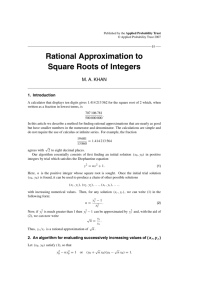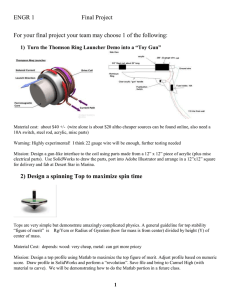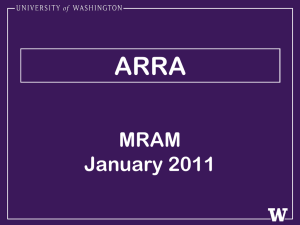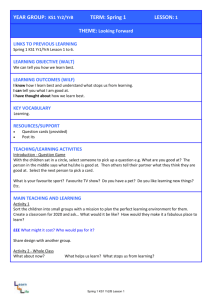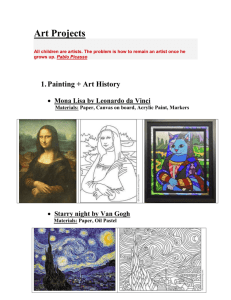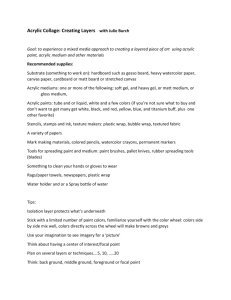Extruded Acrylic Sheet - YPP York Plastic Products
advertisement
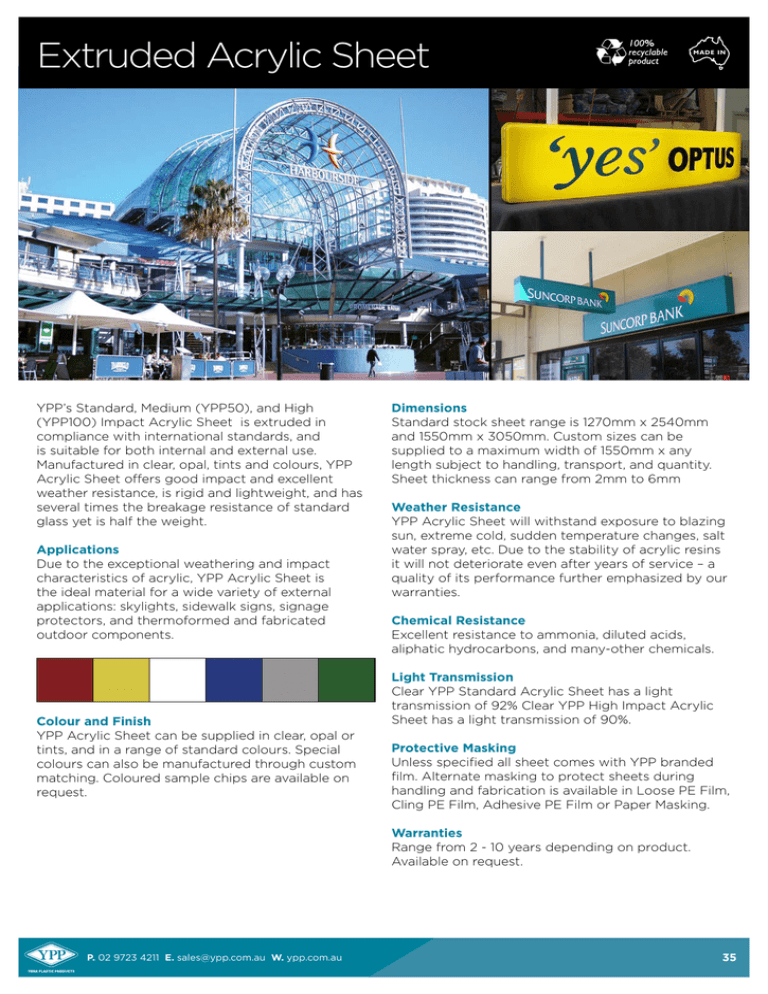
Extruded Acrylic Sheet YPP’s Standard, Medium (YPP50), and High (YPP100) Impact Acrylic Sheet is extruded in compliance with international standards, and is suitable for both internal and external use. Manufactured in clear, opal, tints and colours, YPP Acrylic Sheet offers good impact and excellent weather resistance, is rigid and lightweight, and has several times the breakage resistance of standard glass yet is half the weight. Applications Due to the exceptional weathering and impact characteristics of acrylic, YPP Acrylic Sheet is the ideal material for a wide variety of external applications: skylights, sidewalk signs, signage protectors, and thermoformed and fabricated outdoor components. Colour and Finish YPP Acrylic Sheet can be supplied in clear, opal or tints, and in a range of standard colours. Special colours can also be manufactured through custom matching. Coloured sample chips are available on request. MADE IN Dimensions Standard stock sheet range is 1270mm x 2540mm and 1550mm x 3050mm. Custom sizes can be supplied to a maximum width of 1550mm x any length subject to handling, transport, and quantity. Sheet thickness can range from 2mm to 6mm Weather Resistance YPP Acrylic Sheet will withstand exposure to blazing sun, extreme cold, sudden temperature changes, salt water spray, etc. Due to the stability of acrylic resins it will not deteriorate even after years of service – a quality of its performance further emphasized by our warranties. Chemical Resistance Excellent resistance to ammonia, diluted acids, aliphatic hydrocarbons, and many-other chemicals. Light Transmission Clear YPP Standard Acrylic Sheet has a light transmission of 92% Clear YPP High Impact Acrylic Sheet has a light transmission of 90%. Protective Masking Unless specified all sheet comes with YPP branded film. Alternate masking to protect sheets during handling and fabrication is available in Loose PE Film, Cling PE Film, Adhesive PE Film or Paper Masking. Warranties Range from 2 - 10 years depending on product. Available on request. P. 02 9723 4211 E. sales@ypp.com.au W. ypp.com.au 35 Extruded Acrylic Sheet MADE IN Product Data The following values are typical for 3mm clear acrylic sheet at nominal 24C temperature. Tests were conducted in the extrusion direction. Physical Properties Refractive Index Specific Gravity Light Transmission Haze Rockwell Hardness Mechanical Properties Tensile Strength Elongation at Break Flexural Strength Flexural Modulus Notched Izod Impact Strength Falling Dart Impact Strength Water Absorption Thermal Properties Deflection Temperature Under Load, Annealed Vicat Softening Point Glass Transition Temperature Continuous Service Temperature Range Shrinkage from Mold Dimension Longitudinal Orientation Shrinkage (150 C/20min) Test Method Std. Impact ASTM D-542 ASTM D-792 ASTM D-1003, Total Light % ASTM D-1003, % ASTM D-785, (M scale) 1.49 1.19 92 <2 91 Medium Impact YPP50 1.49 1.17 91 <2 68 720 490 390 5.5 35 50 High Impact YPP100 1.49 1.15 90 <3 45 ASTM D-638C, 0.1cm/cm/min Initial strain rate, Max. kgf/cm2 ASTM D-638C, % ASTM D-790C Span-depth ratio16, Maximum kfg/cm2 kfg/cm2 1050 1010 720 32,000 27,000 19,000 ASTM D-256C Kgf-cm/cm of notch 1.2 3.2 5.9 14 95 136 0.3 0.4 0.4 ASTM D-638C (15.2cm x 15.2cm x 0.3cm) 1.4kg dart w/0.64cm radius), kg-cm ASTM D-570, % ASTM D-648, 2C/min, 18.6 kgf/cm2 ASTM D-1525, Unannealed, C 50C/hr, 1kg 50C/hr, 5kg ASTM D-348, C 93 89 79 103 97 104 100 92 N/A 98 86 N/A C (Dependent on part "molded-in" stresses) 74-88 74-85 71-82 ASTM D-955 (cold mold to cold piece), % 0.2-0.6 0.3-0.6 0.3-0.8 K-LRT1, % 5 5 5 Tolerances All dimensions are measured at 22 - 24ºC. Physical Properties Length Width Thickness Sheet length up to 1.5m +3/-1.5mm +1.5/-1.5mm +5%/-5% Sheet length 1.5m to 4m +10/-0mm +5/-0mm +5%/-5% Special sizes over 4m +20/-0mm +5/-0mm +5%/-5% These figures report reliable and accurate information to the best of our knowledge, however, guarantees cannot be given due to the conditions of use being beyond our control. Sheeting applications should be considered on their merits and, if in doubt, contact YPP. P. 02 9723 4211 E. sales@ypp.com.au W. ypp.com.au 36 Extruded Acrylic Sheet Storage YPP Acrylic Sheets are shipped on pallets. It is recommended that on delivery the sheets are unpacked and stored vertically at approximately a 10˚ angle. The vertical storage rack should have a particle board or ply board or plywood back panel to completely support the material. If the material must be stored flat, a solid support board must be put underneath the sheets to prevent distortion. Cutting YPP Acrylic Sheet can be easily cut using most standard fabricating equipment. It is best to keep the masking adhered to both surfaces of the sheet to protect the material from scratching. Circular Saws YPP Acrylic Sheet is generally cut with panel saws or table saws. To efficiently cut material, the saw must be properly aligned and have a minimum of vibration. A carbide tipped, triple chip design, 112 tooth 350mm diameter blade is recommended for general cutting. Jig Saws Jig saw should be used with a blade having 3 to 5 teeth per cm. It is recommended that jig saws be used only for inside or short cuts. Cut at a slow, steady speed and be sure the material is clamped to avoid cracking. MADE IN Forming The forming range of YPP Acrylic Sheet is between 150˚ C and 165˚ C. Over-heating the material will cause bubbles and/or excessive shrinkage. When forming sheets, it is recommended that a clamp type frame be used on all four sides of the sheet to assist with uniform mouldings. Shrinkage up to 5% in the direction of extrusion can be expected. YPP Acrylic Sheet expands and contracts with changes of temperature and humidity. A minimum shrinkage or orientation will occur in the direction of extrusion when heating to forming temperature. Heat Resistance YPP Acrylic Sheet can be used in temperatures from 0˚ to 88˚ C depending on the application. It is recommended that temperatures not exceed 71˚ C for continuous service, or 88˚ C for short duration, intermittent use. Bonding Solvents such as methylene chloride and ethylene dichloride can be used. It is best to cement acrylic via capillary action using a syringe or needle-type applicator. It is recommended to test bond fabrication specimens for possible crazing. Flame Polishing YPP Acrylic Sheet can be polished using this technique. It is recommended you discuss this process with YPP. Band Saws Blades should have approximately 6 teeth per cm. Be sure to cut slowly and with even pressure. When cutting thicker material it is better to reduce the blade speed. Flammability YPP Acrylic Sheet is a thermoplastic and supports combustion. Do not store or install material next to high heat sources or direct flame. Laser Cutting YPP Acrylic Sheet can be successfully cut using laser equipment. Service The YPP experienced technical and sales staff are available, should further information be required. Routing Router bits may have one to four flutes; single and double fluted bits are most commonly used. Carbide tipped bits produce the best results. The router should be of sufficient size with no load resulting at 20,000 rpm. Routing edges of acrylic before polishing or solvent gluing will produce a better finished product. Care and Maintenance YPP Acrylic Sheet offers an easy-to-care-for surface. Wash with mild soap or detergent and plenty of lukewarm water or use a soft cloth with commercial plastic-cleaner. Rinse with clear water and dry by blotting with a damp cloth or chamois. Grease, oil or tar my be removed with a good grade hexane, aliphatic naptha or kerosene. These solvents are available in most hardware stores and should be removed immediately by washing. DO NOT USE: Window cleaning sprays, scouring compounds or solvents such as acetone, petrol, benzene, carbon tetrachloride or lacquer thinners. Drilling Several manufacturers make drill bits especially for plastics. You may, however, make your own high speed metal bits. To make your own bits: • grind the tip between 60˚ and 80˚ •g rind the cutting edge flat - approximately a 2˚ rake angle • t he surface behind the cutting edge should be a clearance angle of approximately 12˚. When drilling, the material should be clamped or held firmly in place to prevent chipping or cracking. Use a slow feed rate. DO NOT FORCE THE DRILL BIT. Back the material up with a piece of wood to prevent chipping when exiting the back of the material. Holes of 25mm or larger should be cut with hole saws. P. 02 9723 4211 E. sales@ypp.com.au W. ypp.com.au 37 Extruded Acrylic Sheet MADE IN General Comparison Between: • Extruded Acrylic • ASA • ABS• HIPS • Polycarbonate • Cast Acrylic • PETG. Categories Toughness Visual Weathering Machining ACRYLIC ASA ABS Standard Impact modified High impact (Luran / acrylonitrile Styrene acrylate) (acrylonitrile butadine styrene) Polycarbonate Standard Cast Acrylic (indoor grade) (high impact polystyrene) Impact Resistance Fair Good Excellent Superior Superior Superior Fair Superior Good Breakage Resistance Fair Good Excellent Superior Superior Superior Fair Superior Good Scratch Resistance Excellent Very Good Fair Fair Fair Good Excellent Fair Fair Stiffness High Medium Low Low Low Medium High Medium Medium Light Transmission Superior Superior Superior N/A N/A Superior Superior Superior N/A Edge Colour Colourless Pale Blue Light Blue N/A N/A Violet / Grey tint Colourless Grey tint N/A Yellowing Superior Excellent Excellent Very Good Fair Fair Excellent Poor Poor Gloss Retention Superior Excellent Excellent Very Good Fair Fair Excellent Poor Fair Clarity Properties PETG HIPS Superior Superior Excellent N/A N/A Fair Superior Poor N/A Routing / Sawing Good Superior Superior Superior Superior Excellent Good Good Superior Shearing / Punching No Yes if warm Yes if warm Yes Yes Yes No Yes Yes These figures report reliable and accurate information to the best of our knowledge, however, guarantees cannot be given due to the conditions of use being beyond our control. Sheeting applications should be considered on the merits and, if in doubt, contact YPP. P. 02 9723 4211 E. sales@ypp.com.au W. ypp.com.au 38
